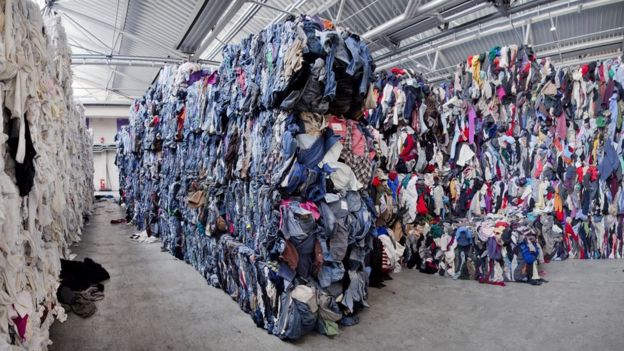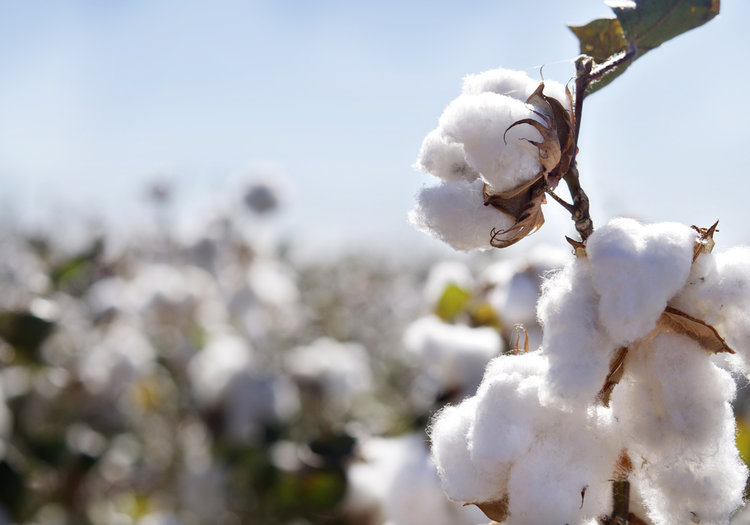How fast fashion is suffocating our wardrobes and our planet
We stop using plastic, we stop eating meat… and when we open our wardrobe, we stop thinking altogether. As global citizens, our environmental awareness is higher than ever, and many of us make an active effort to change our consumer behavior accordingly. At the same time, we are bombarded with the latest trends and newest collections, and we excuse ourselves when opening our laptops to take advantage of instant shipping, free returns, and sales that last forever. Curiously, we forget (or ignore?) that the fashion industry is one of the most pollutive industries in the world. Especially the “fast fashion” part of the industry. A short description of fast fashion, for those who are unbeknownst. Fast fashion can be best described as cheap, trendy clothing, that samples ideas from the runway, celebrity culture or high fashion and turns them into garments at an incredible pace. The majority of clothing shops you find at your common high street are fast fashion retailers. Another great excuse to avoid going there.
Buying cheap clothing is easy, tempting, and even understandable; after all, we have all sacrificed Mother Earth in exchange for a price deal in one way or another. But let’s put things into perspective and break down just how toxic a fast-fashion wardrobe is.
The extent of textile waste
We no longer wear clothing until it falls apart (or yet we do, but only because of the poor quality of our fast fashion garments). Rather, an opposite and perhaps extreme mentality applies to everything we buy nowadays, a mentality that we are always one step behind what’s hot, new, and/or innovative. Since 2000, the global apparel production has doubled, but the frequency with which we wear garments has dropped by 50%[i]. 2014 marked the year that the fashion industry produces 100 billion garments. That’s 14 items of clothing for each person on earth. 30% of which will never even be sold[ii].
Furthermore, clothing manufacturers have more than doubled their annual collections over the last decade, from two collections each year to upwards of five. Fast fashion retailers like Zara and H&M seem to churn out new clothing every single week — which makes sense if you want to make a profit from dirt-cheap clothing. The whole business model of fast fashion revolves around selling as much as possible, as fast as possible in order to maximize profits from low margins.

This scheme results in massive amounts of clothing being produced, bought, worn, and thrown away, all in quick succession. In 2014, the average American bought 16kg of clothing[iii]. That translates to 123 medium cotton blend T-shirts, on average, per person. This perhaps helps us to grasp how, every hour, enough unwanted clothes are collected in the US to fill three Olympic swimming pools[iv]. This does not include the 15% of all fabric produced that ends up on the cutting-room floor — a level of waste that has been tolerated, and ignored, by the fashion industry for decades.
We need to stop viewing clothing as something you simply wear a few times then throw away. A walk past Zara should not result in another shabby T-shirt being bought for less than a cup of coffee. We should be willing to spend more on higher-quality clothing, using sustainable, premium materials. Only then will we realize the true value of our garments, take better care of them, and shed not the clothes themselves, but the “need” to stop wearing them, and eventually throw them away. Buying apparel is an investment based on gradually building a collection of pieces you actually love to wear and that you are proud of.
Pollution across water, air and chemical waste
Unbeknownst to many, the fashion industry is one of the world’s most pollutive industries on many critical fronts, namely: water pollution, CO2 emission, and chemical waste. The apparel industry is responsible for 10% of global CO2 emissions, which is more than all international flights and shipping combined. funny enough: clothing is a major contributor to the rise in transportation and shipping emissions. With the rise of fast fashion and free shipping and returns, we can most likely conclude correlation, or even causality. Production is based outside of the countries that consume the clothing, and almost all fast-fashion retailers advertise their free shipping and returning policy, leading to people needlessly ordering apparel online — just to try it on — and sending it all back afterward. Causing a rise in transportation emission.
Another statistic to help us understand this alarming trend is that 2016 marked the first time since 1976 that transportation emitted more carbon dioxide than power plants in America[v]. We seem to be left with extreme choices, then: is drone delivery already an option, or should we just consume less (or nothing at all)?
When it all starts with cotton
With the growing disconnect between ourselves and the products we consume, it might be difficult for some to realize that the shirt you’re wearing was once raw cotton, just like the steak you buy in the supermarket was once a living cow. Cotton is a cash crop that is responsible for millions of jobs around the world, but it is also a labor- and water-intensive crop. The cotton required to make one T-shirt needs 2,700 liters of fresh water. That is enough water to supply a person with enough drinking water for the next two-and-a-half years. Imagine wringing out the entire contents of your wardrobe — your room would most likely be completely submerged with water.
Besides a big thirst for water, cotton is also one of the most chemically dependent plants on Earth. Even though only 2.4% of the world’s cropland is planted with cotton, the crop accounts for 10% of all agricultural chemicals and 25% of all insecticides worldwide.
Besides cotton, synthetic materials like polyester are increasingly used in garment production. These are made in laboratories through chemical reactions from combining petroleum, coals, and other chemicals. When you wash your synthetic clothing, microplastic fibers get released into the environment. It is estimated that up to 700,000 microplastic fibers are released with each wash load. These synthetic fibers make their way up the food chain onto your plate, and ruin the environment, not to mention your appetite. Making these materials harmful and pollutive on multiple levels.
It might feel like there is no way in which you, as a consumer, can possibly do anything right to help the environment. The truth is that you can. More on that later, after we dive into the human aspect of the fashion industry, or rather, its inhumane aspect.

The impact at a human level
The fashion industry is a $181-billion monster comprised of 176,400 companies and employing 1.7 million people[vi] . The fashion industry has one of the most complex global value chains in the world. With most of the products in Europe and the U.S. manufactured outside of those regions, in low-skilled labor countries like Bangladesh, Vietnam, and Turkey. The EU alone imported $112-billion worth of textiles from third-world countries[vii] .
As consumers, we have to understand where the products we purchase come from and the path it takes, before it ends up in stores. That $15 dress didn’t fall from the sky. The whole reason that Inditex (Zara, Bershka, Pull & Bear, Stradivarius, Massimo Dutti, and more) is able to provide cheap clothing is that somewhere on Earth, in low-wage countries, there are people working in miserable conditions while being grossly underpaid. In some factories, the often-female workers have to produce a hundred garments an hour, with armed guards at the door and the windows barred up. Safety is rarely a concern for factory owners who have to deal with constant demands for cheaper production from fashion companies. Since 2005, almost 1.700 workers in the fashion industry in Bangladesh have died due to collapsing buildings, fire, suffocation, and chemicals[viii]. The most notable was the collapse of Rana Plaza, outside the capital of Dhaka, where 1,136 workers were killed, and hundreds were injured. When these workers protest their low wages and deadly work environments, they are almost always met with violence. Just last February, for example, 5,000 garment workers were fired in Bangladesh after rising up against their employers. Labor unions are clearly a foreign concept to factory owners in Bangladesh.
I highly recommend watching the documentary “The True Cost”, which follows the journey that our clothing takes, from runways to slums, and cottonfields to sweatshops. A great eye-opener for everyone willing to expand their awareness in regards to fast-fashion and cheap clothing.
How can you help?
In order to contribute to a more sustainable world and wardrobe, you don’t need much to get started. It all begins with using your brain when buying clothing. Stop consuming from your gut. Take the time to look at what is currently in your wardrobe, what you need and where you are going to buy it. See the value in the clothing you already own and always keep these three rules in mind when consuming: buy organic, buy local, buy consciously.
If you start taking an inventory of what you already own and what you need for the coming months, you will realize how little you actually need to buy. Notice the difference between needing and wanting?
Don’t be afraid to spend more on a garment. Trust me, it will last you longer, you will take better care of it, you will realize the value of the garments you wear and appreciate the attention and work that went into it. If you decide to get your basic white T-shirt at a fast-fashion retailer, try to look for their most sustainable material or line. Fast-fashion retailers understand the need for sustainability and play into that sentiment by creating clothing made from organic cotton or recycled material. But, please, let’s try to avoid fast fashion as a concept at all costs.
We all have a part to play in trying to reduce our carbon footprint, cutting down waste and taking care of each other. It is time to take off our blindfolds, open our eyes and realize how destructive our clothing, consumption and the industry can be. Only then can we really change ourselves and start contributing to a better, sustainable world, industry and wardrobe.
